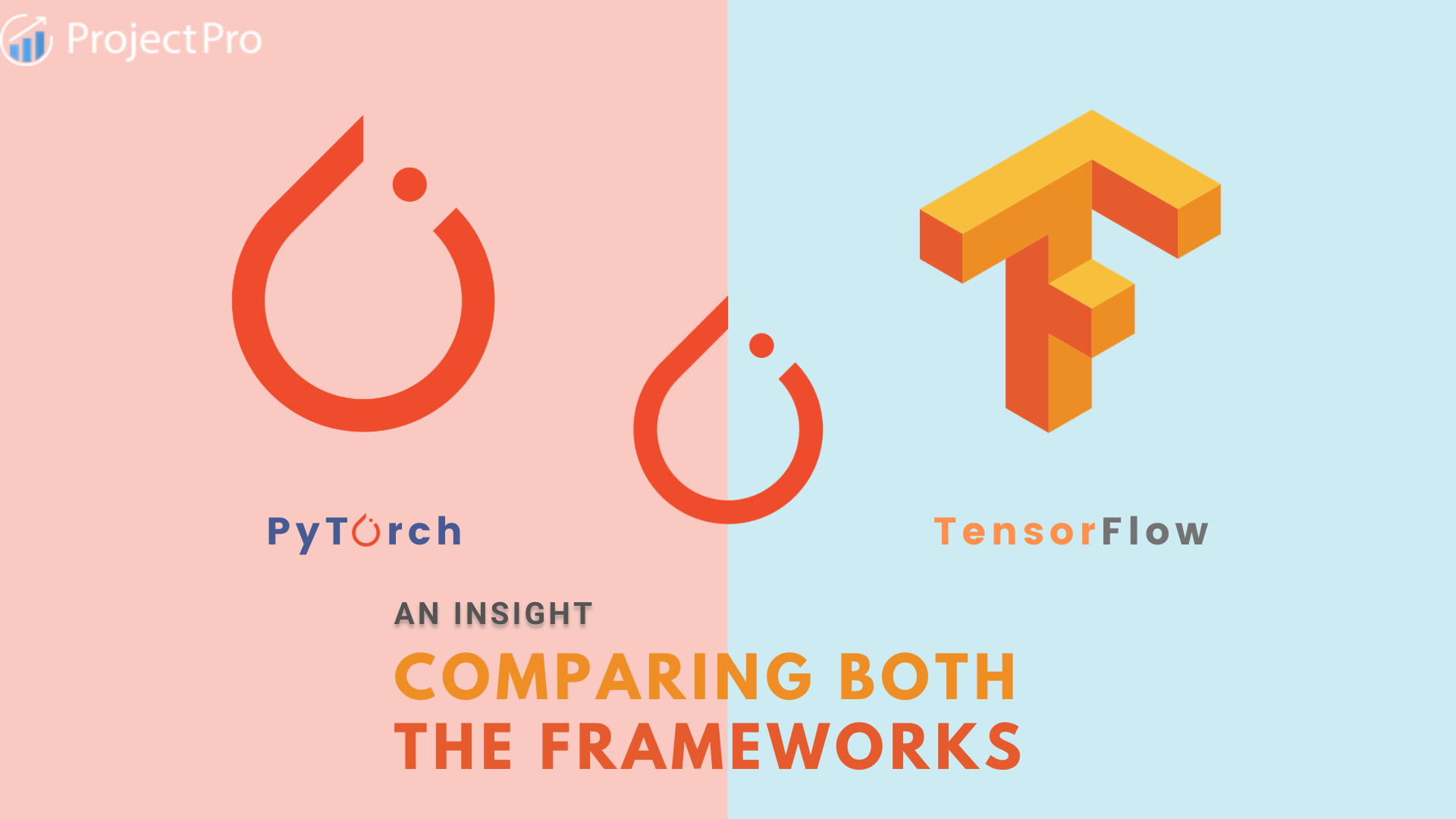Regarding deep learning frameworks, [TensorFlow vs PyTorch] has become one of the hottest AI and machine learning debates. Both frameworks have garnered immense popularity, powering countless research projects and real-world applications. But, if you’re at the crossroads of choosing the right tool, which one should you pick? In this article, we’ll dive deep into the strengths and weaknesses of each, comparing their features, performance, and user experiences.
What Is TensorFlow?
Before we discuss the [TensorFlow vs. PyTorch] debate, let’s first understand TensorFlow. The Google Brain team developed TensorFlow, an open-source framework designed to work efficiently across various platforms. Released in 2015, it has become a go-to tool for developing machine learning models and intense learning.
TensorFlow provides:
- High-level APIs for easy model creation.
- A wide range of pre-built models and components.
- Excellent support for deployment on mobile and edge devices.
The framework is highly versatile, allowing for distributed computing across various machines, and it’s widely used in industry and research.
What Is PyTorch?
Now, let’s explore PyTorch, the other giant in the [TensorFlow vs. PyTorch] discussion. PyTorch, developed by Facebook’s AI Research lab, was released in 2016 and quickly became a researcher’s favourite. It’s known for its dynamic computation graph, which makes it highly flexible for debugging and experimenting with new ideas.
PyTorch offers:
- A more Pythonic interface, making it user-friendly.
- Dynamic computational graphs for real-time adjustments.
- Strong support for research and academic use.
With a focus on ease of use and speed in prototyping, PyTorch has gained significant traction in the AI community.
Ease of Use: TensorFlow vs PyTorch
When comparing [TensorFlow vs PyTorch], one of the most significant factors is ease of use.
- TensorFlow: TensorFlow is powerful, but its learning curve can be steep, especially for beginners. Its syntax isn’t as intuitive as PyTorch’s, although TensorFlow 2.0 introduced Keras as its high-level API, making the framework more accessible.
- PyTorch: PyTorch shines when it comes to ease of use. Its Pythonic nature and dynamic graphs provide an intuitive and seamless coding experience. Many researchers and beginners prefer PyTorch because it is straightforward and clear to work with.
If you’re looking for something quick to pick up, PyTorch has a slight edge in this category. However, TensorFlow is catching up with its Keras integration.
Performance: TensorFlow vs PyTorch
Performance is crucial with deep learning models, especially when dealing with large datasets or complex architectures.
- TensorFlow: TensorFlow has a highly optimized backend, particularly for deployment. It seamlessly supports CPUs and GPUs and is often favoured for production-grade models. TensorFlow’s mobile platforms, like TensorFlow Lite, give it an advantage in applications requiring on-device processing.
- PyTorch: While strong in research and prototyping, PyTorch needs to catch up in deployment optimization. It introduced TorchScript, which allows models to be converted into deployable formats, but it doesn’t have the extensive mobile and edge device support that TensorFlow offers.
In the [TensorFlow vs PyTorch] debate on performance, TensorFlow edges out PyTorch due to its superior deployment capabilities.
Community and Ecosystem: TensorFlow vs PyTorch
Both frameworks have large and thriving communities, but there are some critical differences between the two.
- TensorFlow: TensorFlow benefits from Google’s contribution to its vast ecosystem. Tools like TensorFlow Extended (TFX), TensorFlow Hub, and TensorBoard have built an impressive model-building, deployment, and monitoring ecosystem. TensorFlow’sTensorFlow is more extensive, partly because it’s been around longer.
- PyTorch: PyTorch, on the other hand, has a rapidly growing community, particularly in research. Facebook’s Facebook has led to a strong presence in academic papers, and many of the latest research innovations are being implemented in PyTorch first. PyTorch’s ecPyTorch is smaller but growing fast, with libraries like PyTorch Lightning simplifying model building.
In terms of community support and ecosystem tools, [TensorFlow vs. PyTorch] is a close call. TensorFlow’sTensorFlow’sooling makes it more attractive for industrial use, while PyTorch is the darling of researchers.
Debugging Capabilities: TensorFlow vs PyTorch
Debugging deep learning models can be a real challenge. Which framework makes debugging easier?
- TensorFlow: TensorFlow used to be more challenging to debug due to its static graph structure, but TensorFlow 2.0 and Eager Execution mode have made debugging simpler. However, its static graph nature still requires more effort than PyTorch.
- PyTorch: PyTorch’s dyPyTorch’sph structure makes debugging straightforward. Because computations are executed in real time, errors are easy to catch and fix. This feature has made PyTorch the preferred choice for experimentation and research, where rapid prototyping is essential.
For ease of debugging, PyTorch wins hands down in the [TensorFlow vs PyTorch] comparison.
Deployment: TensorFlow vs PyTorch
Deployment is critical when choosing between [TensorFlow and PyTorch], especially if you plan to take your models into production.
- TensorFlow: TensorFlow excels in deployment. Tools like TensorFlow Serving and TensorFlow Lite offer seamless integration into production environments. TensorFlow Lite even allows models to run on mobile devices, IoT devices, and edge systems.
- PyTorch: PyTorch is catching up in deployment, but it’s still not as streamlined as TensorFlow. TorchServe is PyTorch’s sePyTorch, and TorchScript helps convert models for deployment, but the framework doesn’t have the same production-ready features as TensorFlow.
TensorFlow is the clear winner for deployment, making it the go-to choice for many companies looking to scale their models.
Visualization and Monitoring: TensorFlow vs PyTorch
Visualizing the performance of your models and monitoring them during training is vital for profound learning practitioners.
- TensorFlow: TensorFlow includes TensorBoard, a powerful visualization tool for monitoring your model’s real-time remodel model. You can easily track metrics like loss, accuracy, and even model architecture.
- PyTorch: PyTorch isn’t a fully integrated tool like TensorBoard, but it can still be used with TensorBoard via a third-party integration. Other tools like Visdom and Matplotlib can also be used, but they require more setup.
TensorFlow is the top choice for built-in visualization and monitoring tools in the [TensorFlow vs PyTorch] discussion.
TensorFlow vs PyTorch: When to Use Which?
Now that we’ve compared PyTorch] in various areas, let’s summarise how to use each.
- Use TensorFlow if:
- It would help if you had a framework for production and deployment.
- You require mobile or edge device support.
- You want to use TensorBoard for visualization and monitoring.
- Use PyTorch if:
- You’re focused on research or rapid prototyping.
- You value ease of use and a Pythonic approach.
- You want better debugging with dynamic computation graphs.
A Table Comparing TensorFlow vs PyTorch
To provide a quick overview of [TensorFlow vs PyTorch], here’s a comhere’sn table:
FeatureTensorFlowPyTorch
Ease of Use Moderate Easy
Performance High (optimized for production) High (research-focused)
Community Support Large and established Growing, research-heavy
Deployment Excellent (TensorFlow Serving, Lite) Improving (TorchServe)
Debugging Good (with Eager Execution) Excellent (dynamic graph)
Visualization TensorBoard (built-in) Requires external setup
Conclusion: The Choice is Yours
Ultimately, your choice of [TensorFlow vs. PyTorch] depends on your needs. PyTorch is an excellent choice if you’re developing cutting-edge research models and need flexibility. But if you’re looking for a robust, production-ready framework with comprehensive deployment tooling, TensorFlow stands tall.
Both frameworks are compelling, and as they evolve, they become alike in many respects. Whether you’re a restorer or an industry professional, you’ll find that TensorFlow or PyTorch can help you achieve your deep learning goals, and at the end of the day, that’s what that’s.
The debate between [TensorFlow and PyTorch] isn’t about finding a one-size-fits-all solution but understanding which framework aligns with your project needs. Happy coding!



